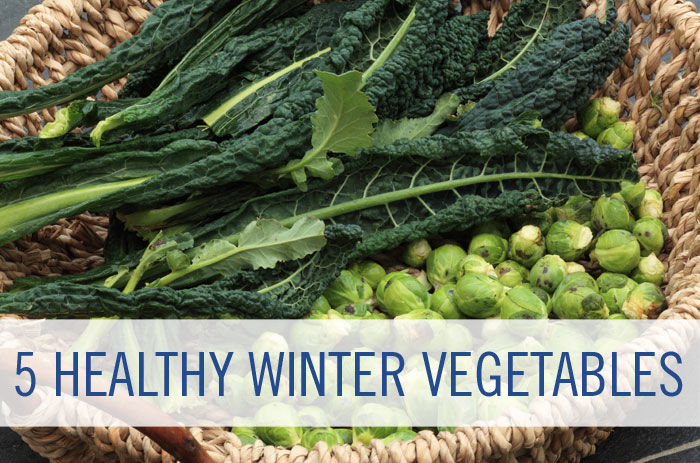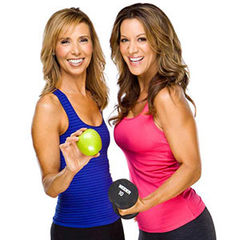
Do you know which vegetables are best to eat? There's no right or wrong answer as ALL vegetables are nutritional superstars. They are rich in vitamins, minerals, fiber, phytochemicals and antioxidants, and it’s best to eat a wide range of vegetables that cover a wide spectrum of colors—red, orange, yellow, green and purple. More colors equals more antioxidants, each one working to reduce inflammation, support detoxification pathways, and reduce your risk of cancer, cardiovascular disease and diabetes. But the very best vegetables are the ones that are in season. Choosing these vegetables is better for the planet (locally grown) and for your wallet (less expensive), and is more nutritious.
The winter season is all about warm, dense, comforting foods that support your immune system. In the cold months, our bodies naturally crave heartier foods—soups, stews and chili. Incorporating winter vegetables into these dishes is easy and we recommend making large batches of whatever you are cooking so it can last you the whole week.

Beets are nutritional powerhouses because of their deep rich color. They contain betalains, a class of phytonutrients that are responsible for their antioxidant, anti-inflammatory and detoxification properties. The betalains are sensitive to length of cooking so keep cooking times shorter (steaming less than 15 minutes, roasting less than 60 minutes). Beets are also rich in bone-building magnesium and calcium. And don't throw away those beet greens because they're high in two carotenoid phytochemicals lutein and zeaxanthin, which promote eye health.

Brussels sprouts are in the same family as cabbage (cruciferous vegetables) and contain the same cancer protective glucosinolates. Studies have shown that 1 1/4 cups of steamed Brussels sprouts can lower cholesterol and protect DNA. One cup of Brussels sprouts contains 480 mg of the omega-3 alpha-linolenic acid (ALA) and high amounts of vitamin K (bone health), folate (important for heart health and in women who want to get pregnant) and vitamin C (increases collagen production, which firms skin tone). Just don't overcook them as longer cooking times release the hallmark sulfur smell. Choose brussel sprouts that are green, firm and compact; cut them into quarters and either steam or roast them with some minced shallots and garlic.

Kale has been enjoying the title of "most popular" vegetable for a few years now and for good reason. It is rich in beta-carotene, vitamins A, C and K, as well as manganese and calcium, which act as antioxidants and reduce inflammation. Kale is also loaded with belly-filling fiber, which will help keep you full and energized. There are so many ways to prepare kale: steamed, baked into kale "chips," added to soups and stews, sautéed and added to an omelet, ground into a pesto or raw in a salad. The trick to a great kale salad is to remove the center rib, finely chop the leaves, and then massage the dressing into the leaves for a minute before adding the rest of your ingredients. This will help break down the fibers and make the kale super soft and easier to eat and far more delicious. Choose organic kale when you can because according to the Environmental Working Group's annual list, it is one of the vegetables with the highest residue levels of pesticides.

Do you know the difference between winter and summer squash? Summer squashes like zucchini, yellow crookneck and patty pan have a thin, edible skin. Winter squash like butternut, acorn, turban, hubbard, spaghetti and delicata have a tough, inedible skin that can be peeled or cut away either before or after cooking (depending on the cooking method). You can add peeled and cubed squash to soup or chili, or steam or roast cubes or larger pieces and then puree them. Here’s a baking secret: Use pureed pumpkin as a fat replacement in muffins and quick-bread recipes. Winter squash is high in five B vitamins (B1, B3, B6, pantothenic acid, and folate), manganese, vitamin C and beta-carotene, and contains 340 mg of anti-inflammatory omega-3 alpha-linolenic acid. Considered a starchy vegetable, the starch in winter squash is an excellent source of carbohydrate that will provide energy before a workout. It will also help with muscle glycogen resynthesis after a workout. The seeds inside the squash are also edible, full of protein and healthy fats. After you wash and dry them, sprinkle them with some spices (cumin and smoked paprika, for example) and roast them in the oven at 170 degrees F for 15 to 20 minutes.

You've likely heard that eating colorful vegetables is better for you, but white vegetables like onions, garlic and cauliflower are just as important as other vegetables. Cauliflower is a cruciferous vegetable, like broccoli, cabbage and brussel sprouts. It's high fiber content will keep your digestive tract happily moving along, while its vitamin K and calcium will promote strong bones and teeth, and choline will aid in learning and memory. The antioxidants found in cauliflower have been linked to a lower risk of reproductive cancers in both men and women. Our favorite way to prepare cauliflower is to roast it with some whole pieces of garlic and then puree in the food processor. Add some vegetable broth, nonfat plain Greek yogurt and Parmesan cheese to make faux mashed potatoes.
 by
by 










 by
by